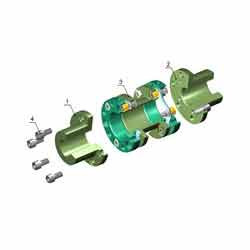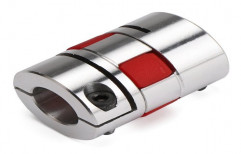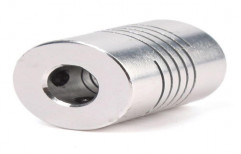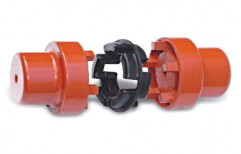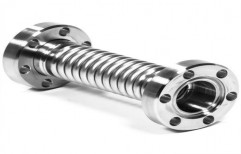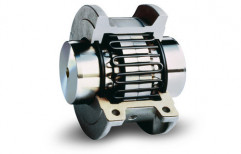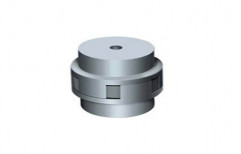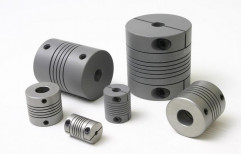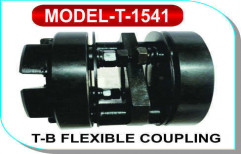Featured Suppliers
How it works
- Submit an enquiry to a product.
- Wait for a call from nearest supplier from your area.
- Get quote and product details.
- Choose best from them.
Recently Added Suppliers
Product Description
We are specialized trader of MK Type Flexible Couplings. It is a zero back lash non lubricating coupling suitable for turbines, pumps, fans, blowers, compressors and equipments of oil and gas industry. It can take angular misalignment up to 0.6 mm and axial misalignment up to 1.6 mm.
This type is recommended as principal for standard application conditions. The principle difference between MK type Flexible Couplings and MK II - 2 type couplings of similar purpose is continuation of torque transfer even after breaking of flexible coupling, flexible metal membrane for any reason. MK type couplings have “cartridge” construction.
Coupling consists of two half-couplings 1, 2 and spacer 3, which contains two pre assembled flexible elements 9. Spacer 3 is fastened to half-couplings 1, 2 by four-eight standard bolts 4 on every side. Torque between half-couplings 1, 2 and spacer 3 is transferred by friction between their flanges. Friction between flanges of half-coupling and spacer is provided by tightening of bolt 4.'
Spacer 3 consists of two flexible elements 9, which are connected to corresponding separators 11 and an intermediate bush 10 by bolts 12, 14, 15, transferring torque. At the same time arms of the flexible element 9 work on extension as well as compression. Axial and angular displacements of separators 11 in regard to intermediate bush 10 (and axial, angular and radial displacements of half-couplings as well) are compensated by flexible element deformation. In case of breakage of flexible elements 9, torque transfer between intermediate bush 10 and separators 11 is realized only by bolts 12, 14, 15 by special bronze bushes 16, which prevent spark.
Advantage:
For further information refer to attached file
This type is recommended as principal for standard application conditions. The principle difference between MK type Flexible Couplings and MK II - 2 type couplings of similar purpose is continuation of torque transfer even after breaking of flexible coupling, flexible metal membrane for any reason. MK type couplings have “cartridge” construction.
Coupling consists of two half-couplings 1, 2 and spacer 3, which contains two pre assembled flexible elements 9. Spacer 3 is fastened to half-couplings 1, 2 by four-eight standard bolts 4 on every side. Torque between half-couplings 1, 2 and spacer 3 is transferred by friction between their flanges. Friction between flanges of half-coupling and spacer is provided by tightening of bolt 4.'
Spacer 3 consists of two flexible elements 9, which are connected to corresponding separators 11 and an intermediate bush 10 by bolts 12, 14, 15, transferring torque. At the same time arms of the flexible element 9 work on extension as well as compression. Axial and angular displacements of separators 11 in regard to intermediate bush 10 (and axial, angular and radial displacements of half-couplings as well) are compensated by flexible element deformation. In case of breakage of flexible elements 9, torque transfer between intermediate bush 10 and separators 11 is realized only by bolts 12, 14, 15 by special bronze bushes 16, which prevent spark.
Advantage:
- Can take very high level of radial and axial misalignment. Depending upon shaft diameter can accept radial misalignment up to 0.60 mm and axial misalignment up to 1.6 mm
- Maximum rotational speeds from 6000 to 15000 RPM without balancing
- Maintenance free and does not need in lubrication or regular inspection
- Design available to declutch the mechanical equipment in case rotating equipment encounters excessive torques or coupling fails. This limits damage to the costly motor and driven equipment
- Design available to continue to rotate the driven equipment in case of failure of couplings due top excessive torque This is required , where process is critical and operator will like to stop the equipment after completion of it
- Spark less operation even after damage to the coupling. Suitable for hazardous areas and for oil and gas industry
- Excellent power to weight ratio
- Imposed forces on machinery is low leading to a reduced machinery vibration and maximization of bearing life
- Low cost of inventory due to cartridge design
- Compared to Gear couplings , there is no wear and tear and has very long life
For further information refer to attached file

